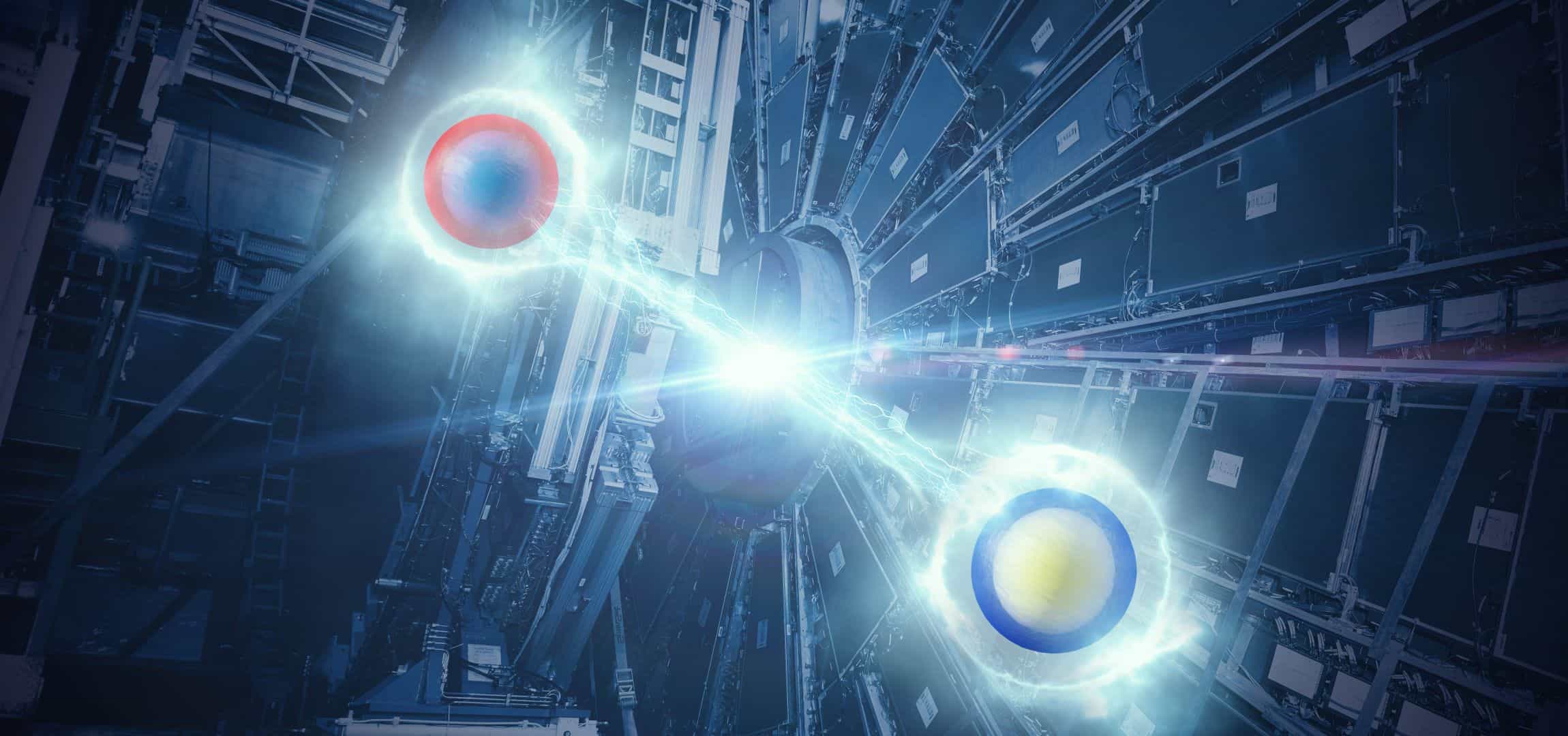
Physicists working on the ATLAS experiment at CERN have observed entanglement between pairs of top quarks for the first time. The finding demonstrates that entanglement can occur at energies more than 12 orders of magnitude higher than is typical for laboratory entanglement experiments. They also show that particle-physics facilities such as CERN’s Large Hadron Collider (LHC) can be used to study quantum mechanics and quantum information.
Entanglement is one of quantum mechanics’ strangest features. Dubbed “spooky action at a distance” by Albert Einstein, it creates an invisible connection between two objects that share a joint quantum state, such that measuring the state of one object – the spin of a particle, for example – immediately gives the state of the other, regardless of the distance between them. Many objects have been entangled, including photons, atoms and molecules as well as larger objects such as macroscopic diamonds.
Measurements of entanglement between another of nature’s building blocks – quarks – have remained elusive, however. This is because neither the up and down quarks that make up protons and neutrons (and therefore constitute most of the matter around us), nor heavier cousins like the top quark that are only generated in high-energy collisions in particle accelerators, can ever be observed as free particles.
Heavy stuff
Despite these difficulties, the top quark is in some respects an ideal candidate for measuring entanglement. It has a spin of ½ and is the heaviest known fundamental particle, with a mass about 184 times that of the proton. This huge mass makes it highly unstable, and it decays within about 10-25 seconds. Crucially, though, its spin is transferred to its decay products, including leptons such as electrons and neutrinos. This preservation of spin occurs because other limiting processes, such as spin decorrelation or the formation of hadrons (the bound states of quarks, such as protons or neutrons) from quarks and gluons, take several orders of magnitude longer. As a result, the top quark’s spin can be inferred by measuring the spins of its decay products.
The ATLAS physicists studied top/anti-top quark pairs that form when protons are accelerated to relativistic speeds inside the LHC ring and smashed into each other. What sets this experiment apart from previous top quark experiments is that the team focused on pairs at their so-called production threshold – the point at which the energy is just sufficient to produce top-quark pairs. At this point, the top quarks are expected to be maximally entangled. The degree of entanglement can then be deduced from the angular separation between the charged leptons that form in the collision.
Top quality
After obtaining data from collisions at 13 TeV between 2015 and 2018, the team compared angular separations recorded at the production threshold with similar measurements when no entanglement could be expected. This enabled the team to calculate the degree of entanglement between the top-quark pairs to an extent that meets the “gold standard” of particle physics: a statistical significance above the 5σ mark.
Yoav Afik, a physicist from the ATLAS analysis team who is also affiliated with the University of Chicago in the US, says the result, which was announced an ATLAS collaboration conference and has not yet been peer reviewed, shows that high-energy colliders such as the LHC can serve as a laboratory for studying foundational problems in quantum mechanics. One possible future direction, he adds, would be to study other quantum information concepts, such as Bell inequalities, quantum discord and quantum steering, using top quarks. Another might be to perform similar measurements in other systems, such as Higgs bosons. A final opportunity for interdisciplinary collaboration is that some techniques derived from quantum information could be helpful in searching for physics beyond the Standard Model.

Long-range quantum entanglement measured at last
Martijn Mulders, a member of CERN’s CMS team who was not involved in the ATLAS research, calls it an “original and beautiful result”, adding that the analyses are complex and not easy to perform. He adds that the extremely short timescale and distances (many times smaller than the diameter of a proton) over which the entangled top quark states were measured are the precise opposite of typical quantum entanglement experiments, which focus on long-distance and long-term entanglement. Mulders notes, however, that the 5σ aspect of the result has sparked some “healthy discussions” among particle physicists because modelling the behaviour of top quark pairs – especially close to threshold – is new territory and therefore challenging.
